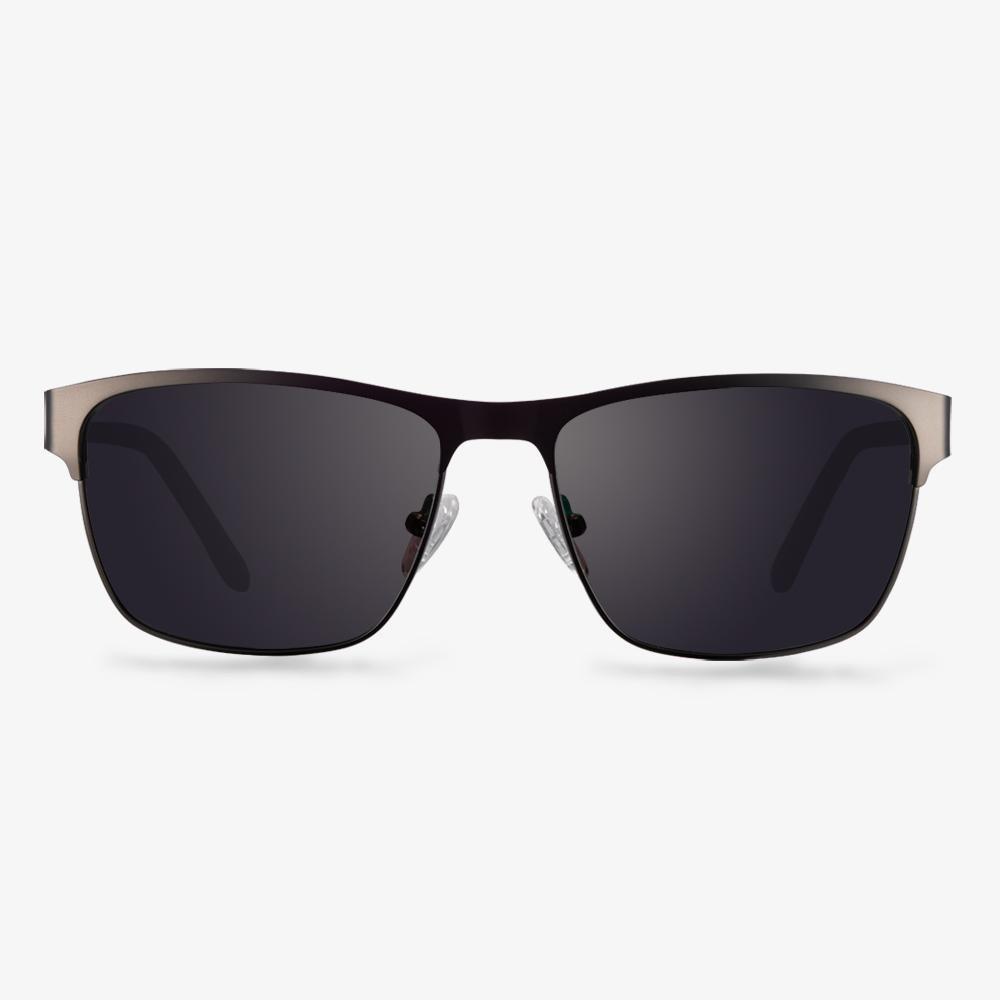The discoloration principle of photochromic lenses
The fine grains of silver halide and copper oxide were melted into the glass melt of the lens blank material to produce the lens. When the lens is in the ultraviolet environment, the silver halide molecules will undergo a chemical reaction due to the ultraviolet radiation and decompose into silver ion particles and halogens. Because the silver particles are dark and absorb visible light, the lens gets darker. When the ultraviolet light is weakened or isolated, silver ions and halogens are recombined under the action of catalyst copper oxide to form silver halide, so the color of the lens gradually becomes lighter and transparent again. The discoloration mechanism of the resin lens is similar to that of the glass lens.
Shape memory alloy
It is made up of nickel, titanium, vanadium, and other metals, and has good elasticity. When faced with external force, the temple can bend more than BETA titanium alloy and can be restored to the original state, so it is named shape memory alloy.
Half titanium frame: Usually, it refers to the titanium combination frame, such as metal frame with pure titanium or β titanium conveniently. It can be reversed, and the former is more common.
What glasses are best for night driving?
You had better not make myopia sunglasses directly with sunglasses frame. The radian of a lot of sunglasses is too high. When the nearsightedness lens that uses 400 degrees directly is squeezed into radian even 600 degrees to 800 degrees frame. The actual degree of the lens and other parameters will change. And, to meet the processing that sunglasses frame needs, the pupil distance of most myopic sunglasses was magnified 4 mm above. This is eye damage! No matter what style or look your glasses are, make sure they are specifically designed to eliminate glare and improve your view.
ATTCL Retro Polarized Night Driving Glasses
These glasses have metal frames. The metal frame uses an aluminum-magnesium alloy structure, strong and light. While you'll see them available in a variety of colors, you'll still have to choose the night vision option if you want to buy night driving glasses. The anti-glare yellow night lens is designed to filter 20 percent of glare at night.
Kirkland Signature™ HD Digital Progressive Lenses
They use the latest lens manufacturing technology to provide high-definition vision at any distance. Giving you sharper vision in all conditions, all lenses have anti-reflection treatment, and they have superior scratch resistance and superior quality. The lenses help provide a greater reading area and less distortion than standard lenses. And they give each lens a cosmetically attractive appearance.
What Glasses Are Made Of?
In general, most glasses are made of plastic lenses. Why are glasses lenses made of plastic? In fact, plastic glasses are lighter than traditional glasses lenses used in eyeglasses, which means they are more comfortable to wear. At the same time, it is easy to apply lens coatings like anti-reflective to plastic lenses.
Besides, children’s glasses are also made of plastic because it is more resistant to impact. There are four main types of plastics used to make eyeglasses and sunglasses lenses which are plastic, Trivex, polycarbonate and high-index plastics.
The plastic lenses made from CR-39 were first introduced. CR-39 is an abbreviation for Columbia Resin #39, the 39th plastic of that type made by Columbia Resin.
Then the polycarbonate glasses were invented. Polycarbonate became out of this world once it found use in aeronautics. Polycarbonate is a type of plastic that can be produced as transparent and easily shaped, making it great for glasses lenses. Polycarbonate is impact resistant so that they are a good lens choice for kids. And the polycarbonate lenses have 100% UV protection.
Next, high-index lenses are available. High-index lenses have a high refractive index with a thin lens. Although high-index lenses are thinner, they are heavier due to the higher density of these plastics.
So, what glasses are made of? Most glasses are made of plastics. Then how are glasses made? To get the answer, keep on your reading.
Pay attention to the color of your blue-blocking glasses.
For children, their lenses are relatively clean and clear, and the blue light transmittance is higher than that of adults, which is more harmful to the eye. On the complementary color principle of optics, a good pair of blue light glasses should not be deep orange, but light yellow. The complementary color to cyan is orange. So, in order for the glasses to absorb blue light and filter it out, they must appear blue's complementary color yellow, otherwise, they violate the optical principle of absorbing blue light.











































